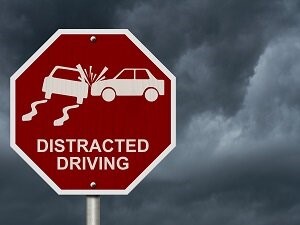August Safety Tip
Understanding Distracted Driving and Inattention Blindness
INTRODUCTION
More than 700 injury crashes involve distracted driving on a typical day in the U.S. While the percentage of drivers using handheld devices has decreased in recent years, many experts feel the use of distracting devices is significantly undercounted. The fact is, drivers frequently lose focus of the road. Their eyes drift and their minds wander as they connect on cell phones or other technologies built into vehicle dashboards.
Studies indicate drivers can be distracted long after programming a GPS device or sending a text via a voice command system. Long enough to miss a stop sign or pedestrian? You bet. At 25 mph, you can travel the length of more than one football field in 10 seconds. What else could you miss during that time?
YOUR MIND IS ELSEWHERE
So, let’s now talk about “inattention blindness,” defined as the failure to notice a visible hazard because your attention is focused elsewhere. This phenomenon occurs regularly when drivers are cognitively distracted.
Example: Let’s say a driver is using voice commands to order takeout food. The driver’s brain becomes lost on that order (thin or thick crust pizza?). Instead of focusing on what’s ahead, the driver can miss up to half of what is in his or her driving environment, including slow or stopped vehicles up ahead. This behavior can have deadly consequences. In America, eight people die every day in distracted driving crashes.
Research shows just listening to a cell phone conversation decreases brain activity associated with driving by more than one-third, leading to safety performance issues, such as the inability to react quickly in congested driving zones. Think of it as … (put on a blindfold) … driving blindfolded. Who drives like that?
ACTIVITY
Of course, using electronics is not the only way drivers can be distracted. What things do drivers do that may be distracting? Here are some answers:
- Talking or texting on the phone
- Eating or drinking
- Applying makeup or shaving
- Reading a newspaper or book
- Watching a video
- Programming a GPS
All of these examples fit under one of the following distraction categories: visual, manual (taking a hand off the wheel) or cognitive (taking your mind off driving). All can raise safety risks, not only for drivers but also for those sharing the road around them. Hands-free devices may be marginally safer than hand-held ones, but the safest choice of all is not using your cell phone or other technology while you are driving.
SUM IT UP
The human brain cannot handle two thinking tasks at the same time, such as driving and talking on the phone. Your brain toggles quickly between these two tasks. When driving, this can slow reaction time and cause crashes. Be safe by silencing your phone, programming your GPS and setting up your radio or music while you still are parked. Your life is much more valuable than any phone call, text or playlist. Let’s get on board with traffic safety. Take the pledge to drive distraction-free from the National Safety Council at nsc.org/pledge.
National Safety Council
https://newsroom.aaa.com/2017/10/new-vehicle-infotainment-systems-create-increased-distractions-behind-wheel
https://injuryfacts.nsc.org/motor-vehicle/motor-vehicle-safety-issues/distracted-driving https://www.cmu.edu/news/archive/2008/March/march5_drivingwhilelistening.shtml

